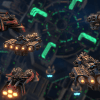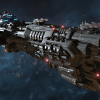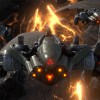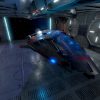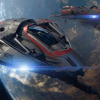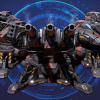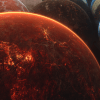The Force Field includes several various types of shaders available in the Assets/FORGE3D/Force Field/Shaders/ folder.
Bellow is the description of these shaders. Click the shader name in the tab to switch.
Shader Path: FORGE3D/Force Field/Force Field
ForceField is the default shader with just the basic options and 24 simultaneous impacts enabled. Check the Force Field Quick Start section of this manual to get the most of the details on the following shader.
- Field Texture – The grayscale mask that is used by the shader to build up the visual shield effect.
- Inner Mask Tint – Set up a shield color on the Inner part of the impact splash.
- Outer Mask Tint – Set up a shield color on the Outer part of the impact splash.
- Mesh Offset – Pushes the shield mesh along its normals.
- Field Texture Pan Speed – Animate the texture offset of the masks.
- Field Background Visibility – Is the first layer that makes the shield feedback at the moment of an impact.
- Field Sparks Visibility – Makes texture masks shine at the time of their intersection. Best used with Field Texture Pan Speed.
- Inner Mask Offset – Will flash first at the point of impact and will fade inwards over time. Specifies the size of the original mask where higher values will make the mask appear smaller due to POW function
- Inner Mask Feather – Controls how smooth the Inner Mask should be drawn.
- Outer Mask Offset – Will reveal at the impact point spreading outwards and forming a “blast wave” effect.
- Outer Mask Feather – Controls how smooth the Outer Mask should be drawn.
Shader Path: FORGE3D/Force Field/Force Field Static
The shader includes everything the default ForceField shader has plus a new Static Field. Use it if you’d like your shield to render itself all time. The impact effects will be drawn on top the existing Static Field.
Shader Path: FORGE3D/Force Field/Force Field Mobile
Due to low-end platform limitations, the Mobile version has its set of features stripped providing decent performance over visual quality.
Limitations on the Mobile include:
- Amount of simultaneous impact points is limited to 6
- Impact spot size and alpha control from script is unavailable
- Mask options limited to Inner Mask only
- “Sparks” texture effect is unavailable
- Rigid body collisions limited to “OnCollisionEnter.”
Important information:
A mobile version of the shader (ForceField_Mobile or ForceField_Static_Mobile) requires a mobile version of controller script (Assets/FORGE3D/Force Field/Scripts/ForceField_Mobile.Cs).
Shader Path: FORGE3D/Force Field/Force Field Static Mobile
The shader includes everything the Mobile shader has plus a new Static Field. Use it if you’d like your shield to render itself all time. The impact effects will be drawn on top the existing Static Field.
Important information:
A mobile version of the shader (ForceField_Mobile or ForceField_Static_Mobile) requires a mobile version of controller script (Assets/FORGE3D/Force Field/Scripts/ForceField_Mobile.Cs).
Shader Path: FORGE3D/Force Field/Force Field Static UV1
The shader includes everything from the Static shader and its texture lookup is using the UV1 channel for automatically unwrapped shields.
See the Complex Surfaces chapter of this manual to learn more.
Shader Path: FORGE3D/Force Field/Force Field Static Vertex Animation Edge Falloff
The shader includes everything the Static shader has plus Vertex Animation and Edge Falloff.
- EdgeFalloff Exp – The exponent grows the mask at the edges of the shield so that it renders masked zones invisible over the higher values.
- EdgeFalloff Power – The multiplier value that helps with the edge control.
- Vertex Tile – The segmentation of the vertices taken into account. Higher values produce a disorganized vertex offsets.
- Vertex Speed – The time multiplier at which the animation takes place.
- Vertex Power – The strength of the vertex expansion applied during the animation.
- VertexFalloff – The exponent of the mask at the edges of the shield neglecting the animation.



